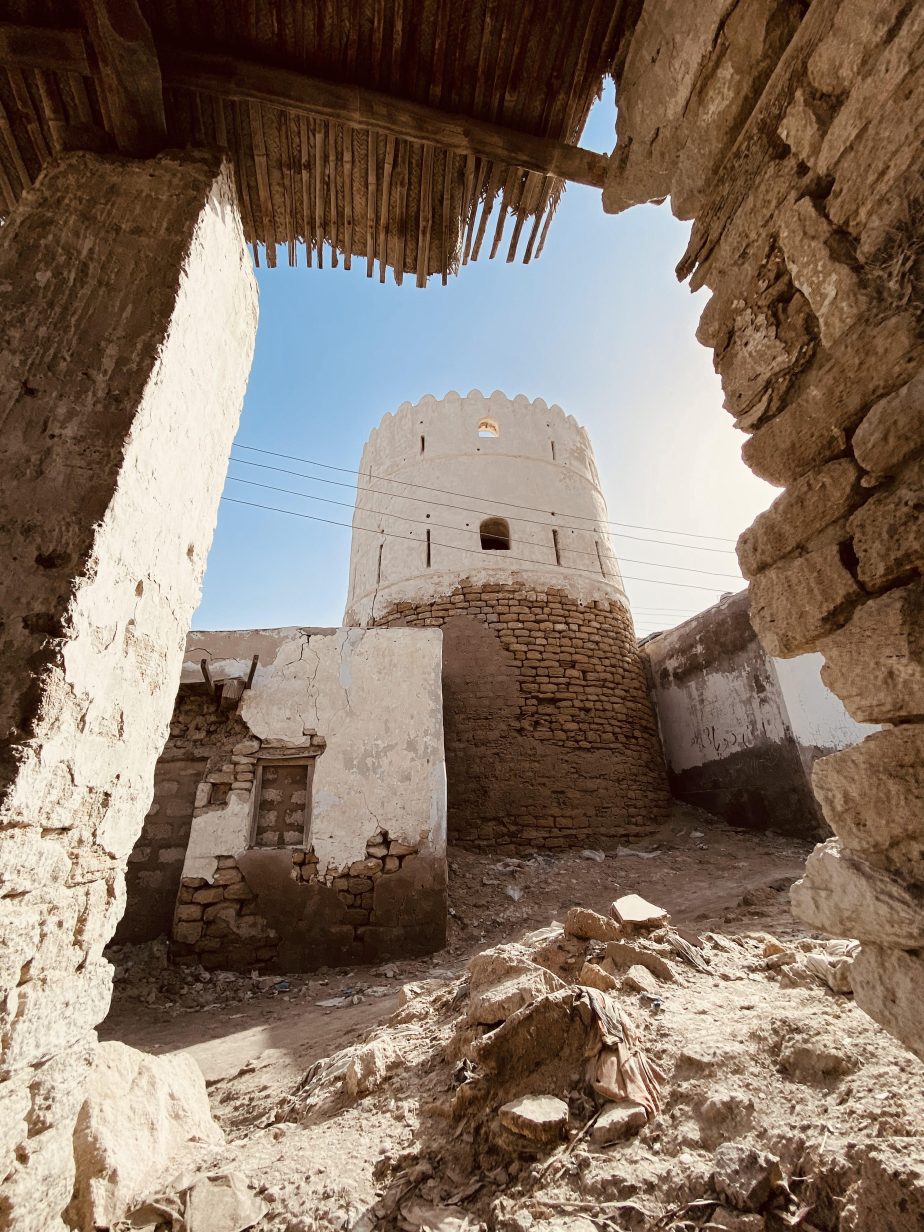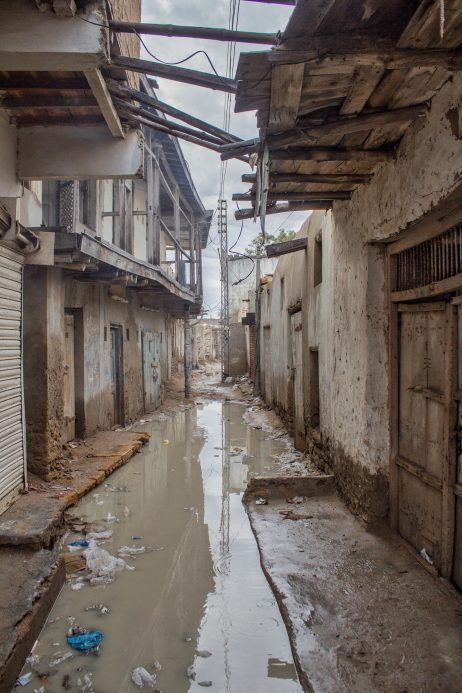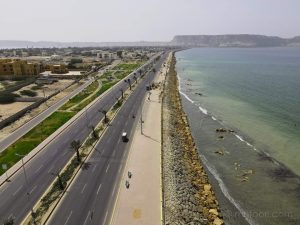On a warm February afternoon in 2022, I did what women in Gwadar rarely do. I sat in an old bookshop with my father to interview Master Imam Buksh, one of the oldest persons alive in the town today.
Buksh told us nothing about developments over the past ten years: the massive infrastructure growth in the town, the operations at Gwadar port, recent protests, and the local rights movement.
But with a heavy tone and pointing towards the road leading to the old town, he said, “Although poor, it was a happy, bustling little town of merchants and fishermen.” Then one day, he told The Diplomat, “some ‘well-dressed, civilized’ men claimed to develop it as an international ‘port city.’ Anyone challenging these plans has since then been considered an outcast.”
Buksh did not use jargon like “neocolonialism,” so often used in the academic conferences I attend on Gwadar’s new developments, but what he pointed to made me wonder if that was what he meant.
Many of the older generation of the local population I often talk to are not very optimistic about the development and the hype about the China-Pakistan Economic Corridor. Many go on to romanticize the time when Gwadar was part of the Omani Sultanate (1783-1958).
By the end of our conversation, Buksh handed me a book by Dr. Houda Alzadjali, an Omani scholar, who has researched and written extensively on Gwadar and its Omani lineage. I brought the book home. I could read the Arabic script but could hardly understand a word.
Gwadar is located in Pakistan’s southwestern province of Balochistan. It boasts of a past and present that is arguably far more interesting than any other town in Balochistan’s 770-km-long coastline. Its strategic location in the Arabian Sea, opening into the Persian Gulf, just at the northeast of the Arabian Peninsula, has historically made it an important natural port.

The Omani Fort in Shahi Bazar in Gwadar, Pakistan. Photo by Asa Wahag
From the Portuguese invasions in the 16th century to becoming an Omani enclave in the 18th century and a port of call for the steamers of British India in the 19th century, and from becoming a part of Pakistan in 1958 to the inception of a deep-sea port in the early 2000s, this little town has gone through an exhaustive and long journey.
But it was the announcement in the summer of 2013 of CPEC, China’s most ambitious project with Pakistan so far, that is perhaps among the most important milestones in Gwadar’s history. It marked the beginning of a new era. As Islamabad and Beijing celebrate the ongoing work and the first decade of the $62 billion corridor, I take a look at what the past decade has brought for Gwadar in particular.
The New Gold Rush
With the announcement of CPEC in 2013, the value of property in Gwadar surged. According to Pakistan’s largest real estate database Zameen.com, between 2014 and 2016, searches for property in Gwadar went up 14-fold.
But this was not the first time it happened.
Growing up, in the early 2000s, there were hardly any two-story houses in Gwadar to begin with. The port brought the first property boom in 2003-2005, often known as the “Gold Rush” of Gwadar. Billboards and TV commercials across the country began advertising different property schemes, often using phrases like Gwadar, Dubai se Do Kadam Agay (“Gwadar, two steps ahead of Dubai.”) Road connectivity to the country’s metropolitan city of Karachi in 2004, an important development that Gwadar’s residents could only dream of so far, was established. But then, with an insurgency gaining momentum in the Balochistan region, Gwadar began to lose its sheen.
With the creation of CPEC, the value of arid land in the remote parts of Balochistan again surged and sold for millions. Those who did not benefit from the previous property boom benefited from the new “Gold Rush.”
The wealth that came in deepened the divide between Gwadar’s rich, who now live in the two or three-story tall bungalows in the new town, and those who still live in mud houses in the old town, where sewerage and rainwater often overflow and where drinking water is still scarce.
The Fishermen and the Old Town Dilemma
In the early 2000s, with the Gwadar Port construction, a master plan – a new map for the city was announced. This map of 2005, showed the old neighborhoods of the fishing communities and the historic architecture in the Shahi Bazaar being subsumed by the port.
“Just like the history of the town, decisions were made by powerful men in large boardrooms in talks with officials, without taking into account stories about real people and real despair,” says K.B. Firaaq, a local activist in Gwadar
Protests and campaigns by the local population and grassroots community organizations resulted in some changes in the CPEC plans in the town. In 2019, the Gwadar Development Authority approved a new map for the town that recognized the oldest neighborhoods and promised to include and renovate their historic architecture.
This map also includes an Expressway, a 19-kilometer, six-lane highway that provides a direct link for cargo traffic to and from Gwadar Port. This expressway running across some of the oldest fishing neighborhoods was initially planned to completely block public access to the ocean.
But in 2018, just as the construction had begun, fishing communities protested every other day with a charter of demands. A breakwater and a few access points were among their many demands, which were eventually accepted by the government authorities.
A Local Rights Movement
But this was not all that the people had wanted. As much as the new roads and buildings have changed the appearance of the town, densely populated old neighborhoods, where most of the population lives, still have slum-like housing, overflowing drains, and women carrying buckets of water for daily use. Illegal fishing is yet another issue that fishing communities have increasingly protested in the last decade. Despite legislation and government promises to prevent this, the problem persists.

Rainwater and open sewage in Gwadar’s Old Town, Pakistan. Photo by Asa Wahag
This stark contrast between the image of a developing port city and the reality of the marginalized majority in Gwadar has prompted protests for years. Then in end-2020, for the first time, an organized mass movement, the “Haq Do Tehreeq” led by a local political activist Maulana Hidayat-ur-Rehman captured the attention of the media.
The demands of the movement include among others problems of the old town, fishermen’s right to fish, educational opportunities for children, reduction of security checkpoints, and the easing of curbs on informal border trading with Iran.
The movement opposes the chosen model of Gwadar’s development, where decisions are made behind closed doors. It calls for the inclusion of locals, where their needs are prioritized.
According to Nazia Baloch (name changed), a local teacher, while mass protests are not new, “Maulana’s approach was different.” He drew large numbers of people “never seen before.” Importantly, women are participating “in such large numbers” which were never seen in rallies before,” she told The Diplomat.
But many find Maulana’s rise riddled with opportunism. As much as he has highlighted the plight of the local population, rumors abound of his interest in politics. Apparently, he is preparing to contest in the upcoming elections. This was evident in the local elections when many of his movement’s members had run and won seats.
Gwadar port has become operational with a few shipments a year, and CPEC is attracting more foreign trade deals including a controversial deal with the Canadian company, the Barrick Gold Corporation, and many more on the list.
Mass protests over the last decade have got Gwadar residents a university in their town and, if not perfect, a somewhat better healthcare system than before has been put in place. But the people are determined to push for more.
Being historically familiar with relentless impoverishment and being excluded time and again, debates about historic injustices and inequalities, which Gwadar port and other developments have further entrenched, are gathering momentum.

































